Introduction
- A conventional view of the timeline of Indian history would simply shift its themes from the Indus Civilization through the Vedic Culture to the Age of the Mahajanapadas.
- This chapter focuses on the Late Harappan, Chalcolithic, Iron Age and Vedic Cultures and the Aryans, except for the Indus Civilization which was covered in the previous lesson.
- Essentially, it deals with the history of India from about 3000 BCE, up to the emergence of the Mahajanapadas, with a focus on social and economic changes. S
- There are no written documents for this period, since the Vedic texts were transmitted orally. At this point of time, people had not developed a script in India, except the symbols of the Indus script which are yet to be deciphered.
- The Early Vedic culture is correlated with some of the Chalcolithic cultures of India, while the Later Vedic culture is correlated with the Painted Grey Ware Culture of the Iron Age in North India.
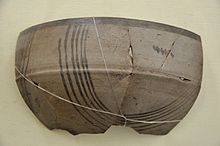
FIg : Painted Grey Ware
- Unlike the age of Indus Civilization, when the urban sites and farming cultures were in a limited area, we notice cultural, agricultural and technological expansion and developments in many parts of India in this period accompanied by the growth of craft production and population.
- A strong cultural foundation was laid across India during this period, which finally culminated in the Early Historic period. The extensive foundations for the village settlements of India were laid during this period.
Literature of the Vedic Age
- The Vedas (Vid = to know, Vidya) are one of the earliest known texts to have been composed in India. The language of the Vedas is described as Vedic Sanskrit. The Vedas are four: Rig is the oldest, and the others being Yajur, Sama and Atharva.
- The Vedic texts were memorized and orally transmitted by Brahmins from generation to generation. They were written down in the later period, after the introduction of writing.
- The earliest known written manuscripts of the Vedas date to the 10-11th century CE. They contain information about the polity, society, religion and philosophy, and hence they are a source for writing history. The main collections of Vedic hymns are called samhitas.
- The Rig Vedicsamhita is the earliest text. The Rig Veda is dated to between 1500 and 1000 BCE.
- The Rig Veda contains 10 books. Books 2 to 7 are the earliest and the Books 1, 8, 9 and 10 are assigned to a later period. Samhitas are ritualistic texts, and they explain the social and religious importance of rituals. Each samhita has added texts called brahmanas, which have commentaries on the hymns and rituals.
- Each brahmana has an aranyaka (forest text) and an upanishad. The aranyakas contain mystical ritual instructions to be undertaken in secret by the sages who live in the forests.
- Upanishads deal with philosophical enquiries. The Yajur, Sama and Atharva Vedas are dated to a slightly later period.
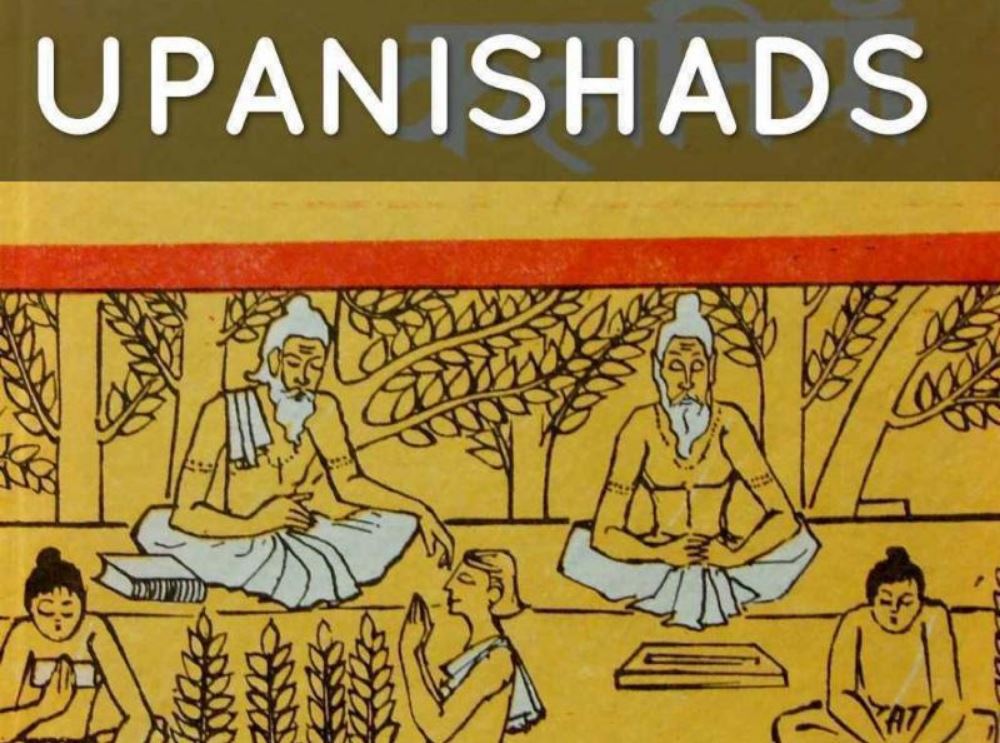
- The samhitas of the Sama, Yajur and Atharva Vedas, and the brahmanas, aranyakas and upanishads attached to the Vedas are the Late Vedic texts.
- The Sama Veda was composed in musical notes which are considered to constitute the basis of Indian music. The Yajur Veda has rituals and hymns. The Atharva Veda contains charms and magical spells.
Zend Avesta
The Zend Avesta is a Persian/Iranian text of Zoroastrianism. This book speaks about the lands and gods of the people speaking the Indo-Iranian languages. It has references to the regions of northern and north-western parts of India. It has terms which show linguistic similarity with the Vedas. This text is an indirect evidence that the early home of the Aryans was outside the Indian subcontinent.

Fig: Zoroastrianism
2.1 Pre-Aryan, Late Harappan and Chalcolithic Cultures of India
- The Pre-Harappan cultures are the earliest Chalcolithic cultures of India, and they are found in the time before the beginning of the mature phase of the Harappan culture, and continued to exist in the later period.
- The other Chalcolithic cultures of India are more or less contemporary to this phase of Harappan culture and they continued even after its decline. Unlike the mature urban phase of the Harappan civilization, Chalcolithic cultures were pastoral and based on farming, generally rural in nature.
- They used copper and stone blades and pottery and also low grade iron in the later period.
- Their settlements were sedentary or semi-sedentary. In the northwestern and western regions of India, the early farming cultures are associated with the Chalcolithic cultures rather than the Neolithic cultures.
- The Chalcolithic people also began to domesticate animals in addition to agriculture. They had cattle, sheep, pigs and goats and buffaloes. Evidence has been found of turtles and fowls in their settlements. The houses were made of stone, mud bricks, mud and perishable wooden materials, and built on a stone foundation.
- Silos (well prepared pits) meant for storage of grains have also been found. The walls were made with bamboo frames. People used black and red ware and black on red ware pottery.
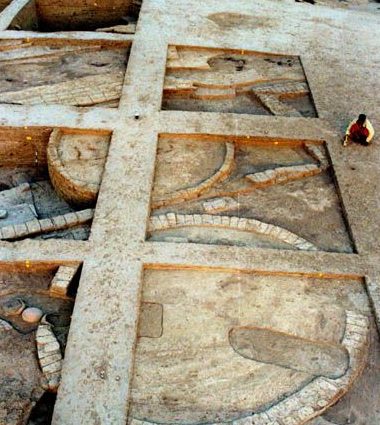
Fig: Silos
- These sites have produced a large quantity of copper objects. They used copper objects such as flat axes, bangles, rings, antimony rods, knives, blades, socket-less axes, barbed and tanged arrow heads, choppers and chisels.
Ochre Coloured Pottery Ware Culture
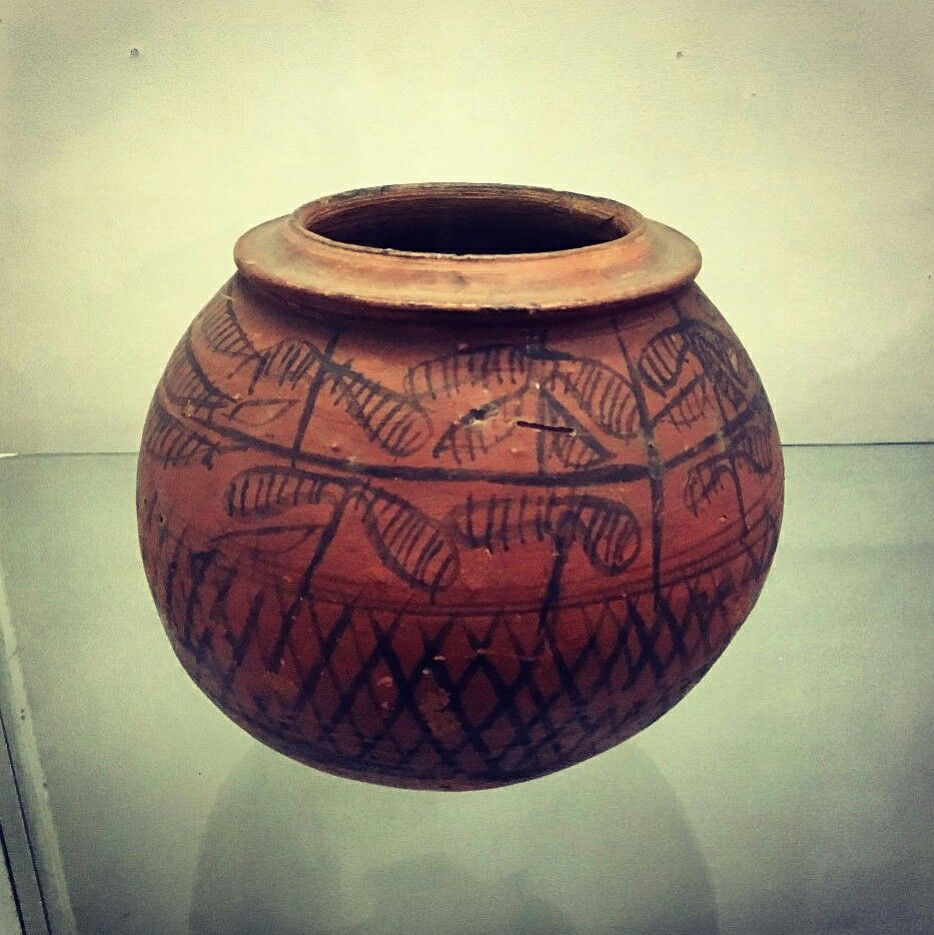
- Ochre Coloured Pottery Ware culture is found in northern India dating to the Chalcolithic period.
- The OCP pottery has red slip and appears ochre in colour (the ochre colour comes off when the pottery is touched) and hence, it is called Ochre Coloured Pottery.
- It has black painted designs. The OCP comes in the form of jars, storage jars, bowls, and basins. The OCP culture dates to 2600- 1200 BCE and is found in the Indo- Gangetic plain and may have had some associations with early Vedic culture.
- The OCP culture is seen as an impoverished Harappan culture and some scholars see it as unrelated to the Harappan culture.
- The OCP sites produced copper figures and objects and therefore it is also known as “copper hoard culture.” It is a rural culture and has evidence of the cultivation of rice, barley, and legumes. They also had pastoralism with evidence of cattle, sheep, goats, pigs, horses, and dogs.
- The villages had wattle-and-daub houses. They used copper and terracotta ornaments. Animal figurines have also been found. Chalcolithic Cultures of South India
- The southern part of India has not produced cultural evidence of a fullfledged chalcolithic culture. Perforated and spouted vessels have been found in some sites.
- Copper bronze tools like chisels and flat axes occur at these sites. Stone tools continued to be used in this area. Black on red ware pottery is found. These people survived through animal rearing and agriculture. Millets, pulses and horse gram were cultivated, and fruits, leaves and tubers were collected.
2.2 Iron Age in North India
- The Iron Age in North India coincides with the painted Grey Ware culture. The painted grey ware is dated to from. 1100 to 800 BCE. More than 1000 sites have been identified with painted grey ware pottery in northern India, with a major concentration in the Ganga-Yamuna valley.
- These ceramics succeeded the Black and Red Ware Culture in the eastern Ganga valley and Central India. The pottery was fine grey in colour with painted geometric designs.
- The painted grey ware laid the foundation of the early political formations. It correlates with the Kuru-Panchala kingdom known from the Vedic texts.
- The Painted Grey Ware cultural phase is followed by Northern Black Polished Ware culture (NBPW), which is associated with the Mahajanapada and Mauryan periods.

Fig : Northern Black Polished Ware culture
- The Painted Grey ware sites reveal the development of agriculture and pastoralism, and the settlements of this period grew in dimension. They show a large scale population increase in the northern part of India.
- The Iron Age in North India was coeval with Painted Greyware Culture, and in South India it was associated with Megalithic burial mounds.
2.3 Megalithic/ Iron Age in Tamilnadu
- The burial system followed by the people of Neolithic period continued into the Megalithic period. A circular tomb using big stone slabs built upon the place of burial is known as a megalith.
- Such megaliths have been found in many parts of Tamilnadu . The urn burial system was another type of practice and is evidenced in Adichanallur (present Thoothukudi district).
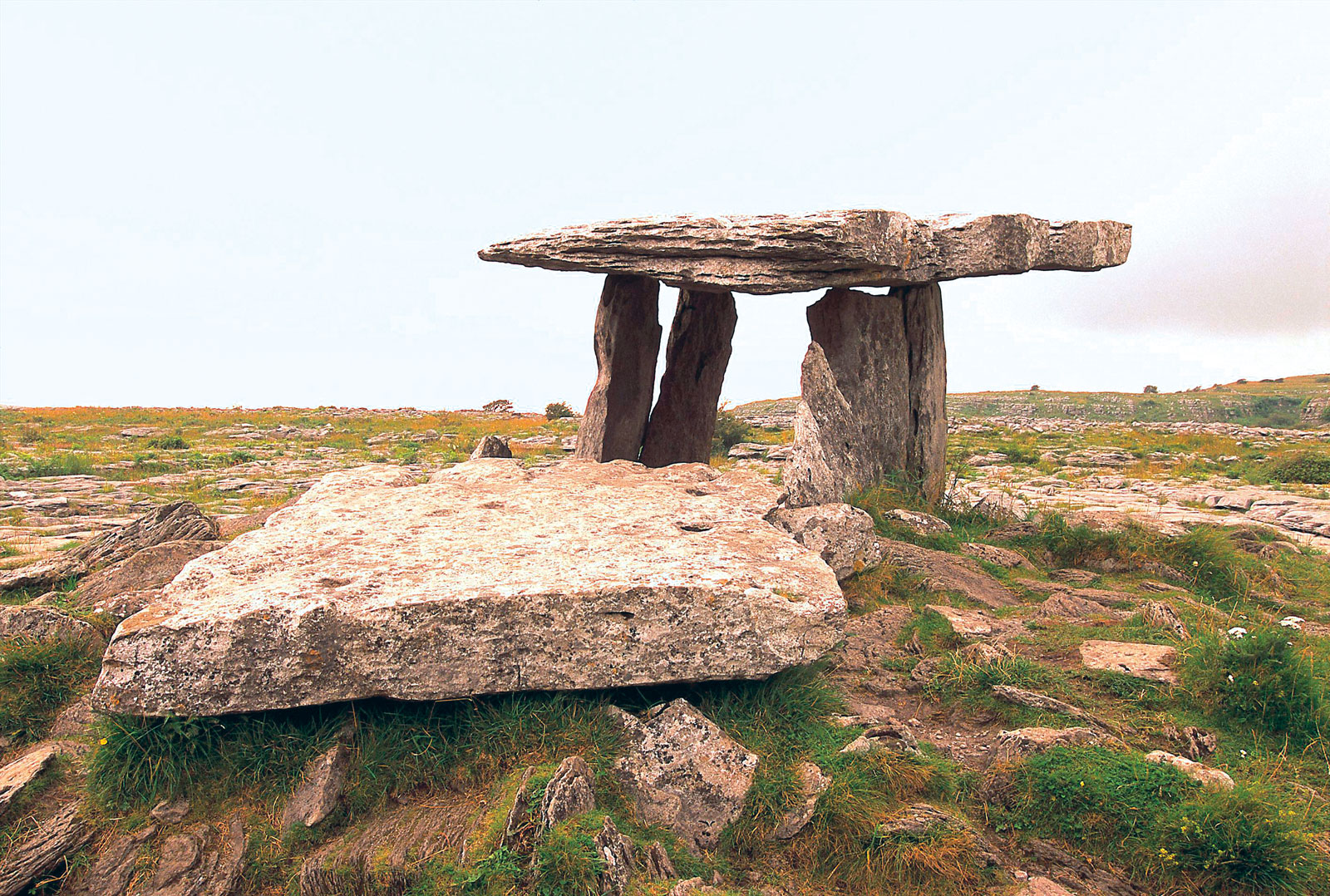
Fig : Megalithic burials
- Black-ware is peculiar to burial sites in Tamilnadu. Interestingly, black-ware is found mostly in burial mounds and not in human habitations. In a majority of urn burials, the use of stone is almost non-existent. However, urn burials are grouped under megalithic because the materials – the pottery, iron objects, beads of semi-precious stones kept in them – are identical to those found in the stone burials.
- The end of Megalithic burial practice is assigned to third-second centuries CE. During this period Brahmi writing akin to Ashokan Brahmi has been discovered in Kodumanal (Erode District).
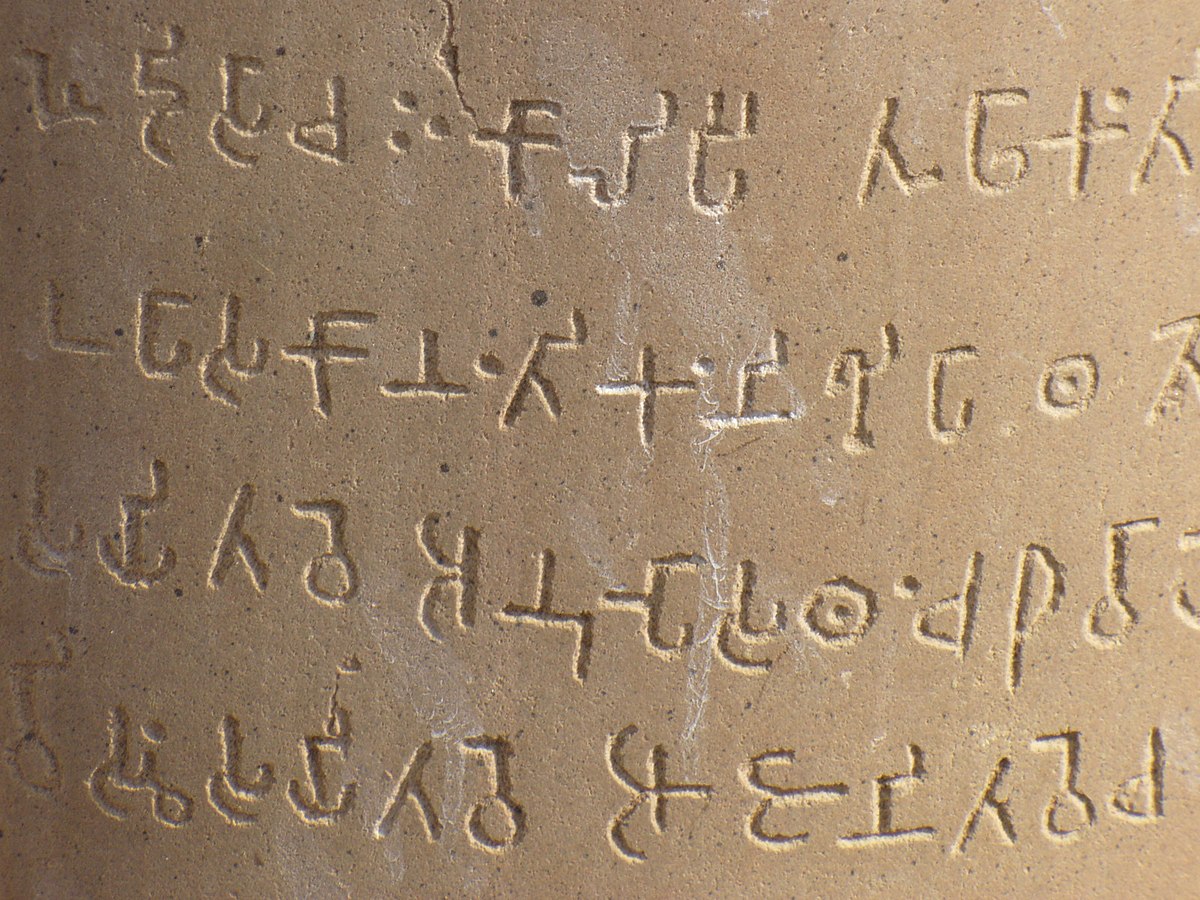
Fig : Brahmi Script
- There is also evidence of the megalithic tradition continuing into later centuries. During the Sangam period people still remembered urn burials.
- The four primitive hero-stones with Tamil Brahmi inscriptions, datable to third to second centuries BCE found in the upper part of the Vaigai valley, support the authenticity of the hero stone tradition described in the Sangam Tamil literature in the context of cattle raids.
- Scholars infer, based on such evidence, that the some of the Sangam poems could be assigned to the early fi rst century BCE or a little earlier.
- Th e tradition of erecting hero stones in memory of dead warrior-heroes is considered to be an extension of the menhir type of megalithic tradition.
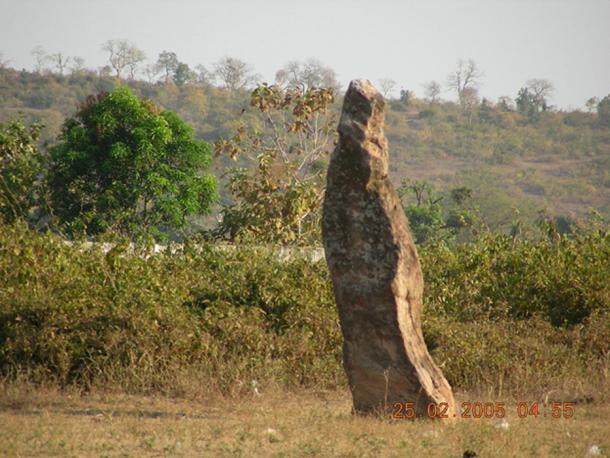
Fig : Menhir
- Menhirs, upright monumental stones, and dolmens made of big slabs or boulders are megalithic tombs found in Tamilnadu. Black and red ware, along with partial human remains and iron objects, were unearthed recently at Vadamalkunda in Krishnagiri, Tamilnadu.
- A few stone slabs were also found at the site. A centuries-old menhir at Singaripalayam excavated near Kundadam in Tiruppur district points to the existence of an ancient settlement along the banks of River Uppar.
The Aryans and Rig Vedic Society
- So far we have considered the Late Harappan Cultures, Chalcolithic and Painted Grey ware Cultures. Let us now turn to the evidence from the Vedic texts, which, unlike the archaeological evidence that tell us only about the material culture, throw light on the ethnic and cultural identities of people. Because of the references found in the Vedas, the Aryan question is one of the important issues concerning the early history of India.
The Aryans
- The attempt to write a history of India began when the Europeans colonised India. They compiled the archaeological and literary sources, as well as oral traditions.
- Certain notions, for example the Aryans, were developed and used in the colonial context, when many parts of Asia and Africa were under the influence of the European powers.
- The concept of race was widely prevalent at that time to classify and categorize people. Some of the views reflect the racist ideas of colonial times. The Aryan theory was linked to the blue-eyed white race and its connection with Europeans.
- Philologists study language in oral and written forms of languages based on historical evidence. They use etymology, comparative linguistics, literary criticism, history, and linguistics in their studies. Though the Rig Veda is in Sanskrit, about 300 words of the Munda and Dravidian languages have been identified in it, suggesting cultural mix with earlier inhabitants. From the Vedas it is evident that Aryans used domesticated horses and chariots.
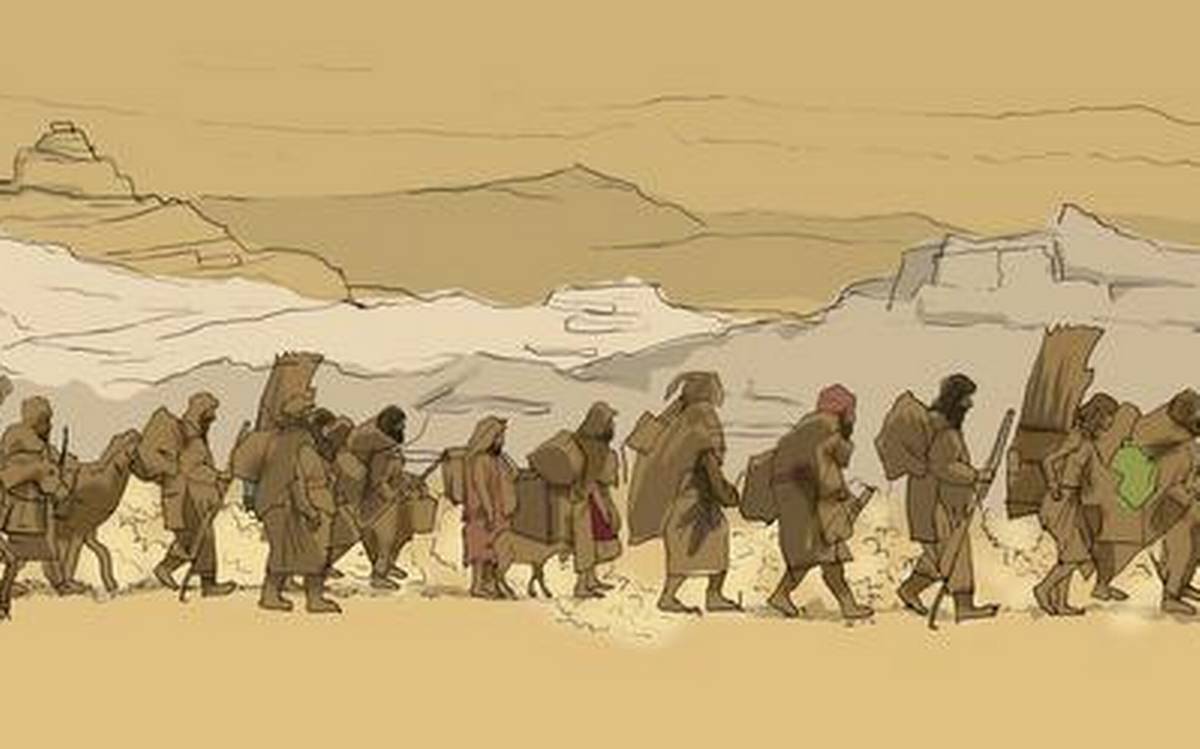
Fig : Aryan Migration
- Their chariots had spoked wheels and they used bows and arrows. They practiced agriculture and pastoralism. They buried and also cremated the dead.
- The cult of fire and the use of soma drink were prevalent among the speakers of the Indo- Aryan languages. The home of Indo-Europeans and Indo-Aryans is still a matter of debate.
- Many scholars are of the view that the Aryans came to India as migrants from Central Asia. It is also believed that several waves of Indo- Aryan migration might have happened.
- There are several factors which support this hypothesis. The traits of the culture of Aryans cover Eastern Europe and Central Asia which is geographically interlinked with India and West Asia and Europe. One of the accepted areas of the Aryan home is Eastern Europe- Central Asia, north of the Black Sea.
- The Bactria-Margina Archaeological Complex is closely related to Aryan culture dated to 1900 BCE–1500 BCE. Ceramics of South Central Asian archaeological sites resemble those found in the Swat valley.
- References to the names of Indo- Europeans languages are found in an inscription dated to 2200 BCE discovered in modern Iraq. Anatolian inscriptions of 1900-1700 BCE and Kassite inscriptions of 1600 BCE (Iraq) and Mittani inscriptions of 1400 BCE (Syria), Bhogaz Goi inscriptions referring to names similar to the Vedic gods (1400 BCE) have the common features of the Indo-European languages, but no such inscriptions are found in India.
- The term asva and several other terms in Rig Veda have common roots in various Indo-Aryan languages. In the Rig Veda, the term asva (horse) occurs 215 times and vrishabha (bull) 170 times. Tiger and rhinoceros, which are tropical animals, are not mentioned in the Rig Veda.
- There is no trace of the urban way of life in the Rig Veda. Hence, the identity of Aryans is not correlated with the Harappan culture, where there is no evidence for horse.
- Nowadays, DNA studies are also used for understanding ancient migrations. M17 a genetic marker (DNA) is said to have been found among the speakers of Indo- Europeans.
2.6 Rig Vedic Culture
Rig Vedic Samhita is the earliest text that relates to the Early Vedic period. The Early Vedic culture is placed between 1500 BCE and 1000 BCE. The political, social and economic aspects of life of this period are reflected in the Rig Vedic hymns.
Geography
In the Indian subcontinent, the early Aryans lived in the area of eastern Afghanistan, Pakistan, Punjab and fringes of Western Uttar Pradesh.
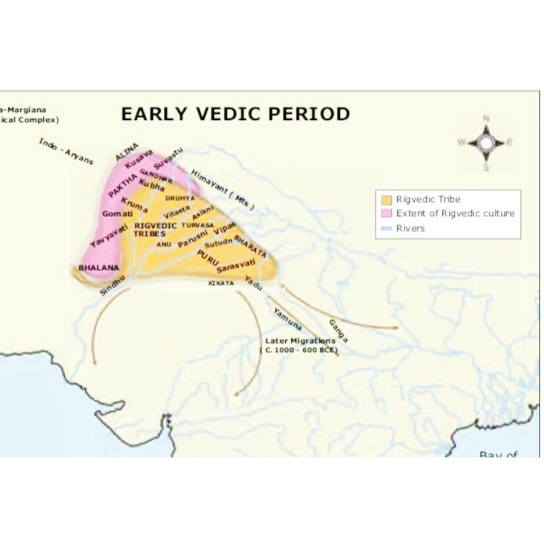
Dasas and Dasyus
- The Rig Vedas speak about not only the Aryans, but also about the non-Aryan people, whom the Aryans encountered in India. When the Rig Vedic people moved into India they came into conflict with people whom they referred to as Dasyus or Dasas.
- Evidently the Aryans differentiated themselves from the dark native people who had different cultural practices, and sought to maintain their distinction.
- The Rig Veda has references to several other groups. Simyu and Kikata are grouped with the dasyus. Sambara son of Kulitara is mentioned as a chief with 90 forts or settlements. Varchin was another chief with many troops. The Rig Veda mentions the defeat of a chief called Sambara by Divodasa of the Bharata clan.
Polity and Political Clashes
- The concept of polity developed in the Rig Vedic time. Various units of habitation and divisions such as the janas, vis, gana, grama and kula are referred to in the Rig Veda.
- The Vedas speak about the Aryans and their enemies and the battles they fought with them. The battles were fought more for cattle and material wealth and the war booty acquired was shared.
- They not only fought with the non-Aryans, but also fought among themselves. They invoked the support of the gods in their battles. They strongly believed that prayers, sacrifices and rituals could offer support in their mundane life.
- The god Indra is called Purandara, which means destroyer of settlements, which were perhaps fenced or planned townships. The term Jana means tribe.
- The Bharatas and Tritsu were the ruling Aryan clans who were supported by Vasishta, the priest. The region of India was named Bharata Varsha after the tribe of Bharatas.
- The Bharata clan was opposed by ten chiefs and five out of them were Aryans.
- This battle was known as the Battle of Ten Kings. The battle took place on the banks of the river Paurushni, identified with the river Ravi. In this battle, Sudas won and he became important leading to the dominance of Bharata clan. The Purus were one of the defeated clans.
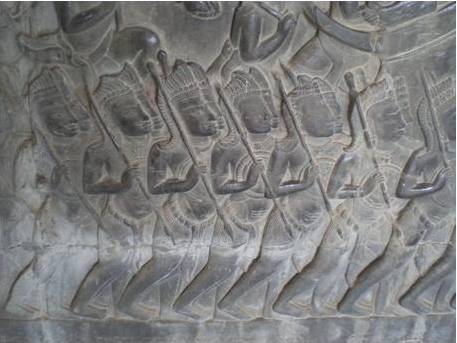
- The Purus and Bharatas formed an alliance and later they formed Kuru clan. Later the Kurus allied with Panchalas and established their control over the Upper Ganga Valley.
Social Divisions
- The Vedic people distinguished themselves from the non-Aryan people. Varna was the term used by Aryans to refer to colour and category.
- The Rig Veda refers to Arya varna and Dasa varna. The Dasas and Dasyus were conquered and treated as slaves.
- They came to be considered sudras in the later period. Social classes were classified as warriors, priests and common people. Sudras as a category of people appeared at the end of the Rig Vedic period.
- Slavery was common and slaves were given as gifts to the priests, but there is no reference to wage labour. Horse-drawn chariots and bronze objects were possessed by a few, suggesting social distinction. Vedic society was largely egalitarian initially, and social distinctions emerged later.
- According to the Purusha Sukta of the Rig Veda the various varnas emerged thus: Brahmanas from the mouth, the kshatriya from the arms, the vaisya from the thighs and the sudra from the feet of Purusha, when he was sacrificed.

- These social divisions are considered to have arisen towards the end of the early Vedic period. Various professional groups such as warriors, priests, cattle-keepers, farmers, barbers are also mentioned.
- Panis were itinerary traders or perhaps caravan traders. Panis are also seen as enemies in some verses.
Tribe and Family
- Kinship was the basis of the social structure of Rig Vedic society. People were identified with specific clans and the clans formed the tribe or jana.
- The term jana occurs in the Rig Veda 21 times but janapada does not occur even once. The term vis, which refers to the common people, occurs 170 times and they lived in gramas (villages). The family (griha) was the main social unit within the tribe.
- It was headed by the grihapati and his wife was known as sapatni. And the family at that point of time was perhaps a joint family.
Women
- Women had a respectable position but it is not possible to generalise about this. Society was essentially patriarchal with a preference for male children and cattle.
- The birth of a son was preferred perhaps because of the martial nature of the society, which required male members for their clashes to establish dominance over the territories.
- Having ten sons was considered as a blessing. Women attended assemblies and offered sacrifices. Marriage was common but primitive practices were also continued.
- Polyandry seems to have existed, and widow remarriage was also known. People married at the age of 16–17, according to scholars, and there is little evidence of child marriage.
Economy: Agriculture
- Archaeological evidence points to the development of agriculture among the Rig Vedic people. The ploughshare is mentioned in the Rig Vedas. The field was known as kshetra and the term krishi referred to ploughing.
- The terms langla and sura referred to plough and the term sita meant the furrow created by ploughing.
- Water for irrigation was probably drawn from wells by cattledriven water-lifts using pulleys. They had knowledge of different seasons, sowing, harvesting and thrashing.
- They cultivated barley (yavam) and wheat (godhuma).
Pastoralism
- Cattle rearing was an important economic activity for the Aryans, although they practiced agriculture. Cattle were considered wealth. The term for war in the Rig Veda was gavishthi which means search for cows (which is the contemporary term (goshti) for factions as well).
- The donations to the priests were mainly cows and women slaves but not land, which reveals the importance of pastoralism. There was no private property in land.
Craft Production
- The Rig Veda mentions artisans such as carpenters, chariot-makers, weavers and leather-workers. Copper metallurgy was one of the important developments of this period.
- The term ayas in the Rig Veda refers to copper and bronze. Karmara, smith, is mentioned in the Rig Veda. Likewise, there are references to siri or yarn, indicating spinning which was done by women and to carpenters, takshan.
- Weaving of clothes of wool is also referred to and obviously it was necessary in the cold weather. Some of the crafts were fulltime crafts, involving specialists.
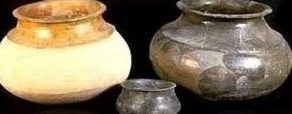
Trade, Exchange and Redistribution
- Trading activities were limited though traders were present during the Early Vedic period. Panis are referred to as traders and they were perhaps caravan traders. The word pan means barter, which was a mode of exchange. Nishka was a gold or silver ornament used in barter.

Fig : Niksha
- A priest received 100 horses and 100 nishka as fee for sacrifices. The danas and dakshinas offered to people were means of redistributing resources.
- The dakshina was both a fee for a specific service and also a means of distributing wealth. The distribution of cows helped spread pastoral activities and economic production.
Transport
Bullock carts, horses and horse-drawn chariots were used for transport. There are references to the sea (samudra) and boats (nau). Boats driven by 100 oars are mentioned.
Polity and Administration
- The polity of the Rig Vedic period was that of a tribal society. The chief of the tribe was the main political head and he was called rajan. The kings lived in multipillared palaces.
- They offered gifts of cattle, chariots and horse ornaments and gold to the priests. Rajan was a hereditary chief. He was perhaps elected by the assembly called samiti. The main duty of the king was to protect the tribe. He protected wealth, fought wars, and offered prayers on behalf of gods. The king had authority over the territory and people. Vedic society was militaristic.
- Bows, daggers, axes and lances were the main weapons of war. Tributes and booty collected from war were redistributed by the king. There are also references to gift of dasas or slaves.
- The king Trasadasyu, the chief of the Purus, gave away 50 women as a gift. The chief was known as gopa or gopati which means, chief of cattle. The assemblies called sabha, samiti, vidhata and gana are mentioned in the Rig Veda.
- Sabha was the assembly of elders or the elites, samiti was an assembly of people, and vidhata was the assembly of tribe. They performed military and religious functions.
- Women attended the sabhas and vidhatas. The king sought the support of the samiti and sabha for his activities. There are debates about the exact nature of these assemblies and functions.
- Most of our understanding of the conditions of Vedic society depends upon the interpretations of various terms. Sometimes it is hard to reconstruct the original meaning.
- The purohita or priest offered advice to the king. Vedic priests advised the kings, inspired them and praised their deeds.
- In turn they received rewards for their services. Senani was the chief of army. There is no evidence of tax collecting officers.
- Perhaps people made voluntary contribution called bali to the king. Some scholars say that bali was an imposed tax, and not voluntary.
- There is no reference to the administration of justice. The officer who controlled the territory was called Vrajapati.
- He helped the kulapas or heads of fighting groups called gramini. Gramini was the head of the village and fighting unit.
Vedic Religion and Rituals
- Religion and rituals played an important role in Vedic society. In the Rig Veda, the natural forces sun, moon, rivers, mountains and rains were defined as divinities.
- The religion was naturalistic and polytheistic. Indra was the most important god and he was called Purandara. Agni was seen as intermediary between god and people.
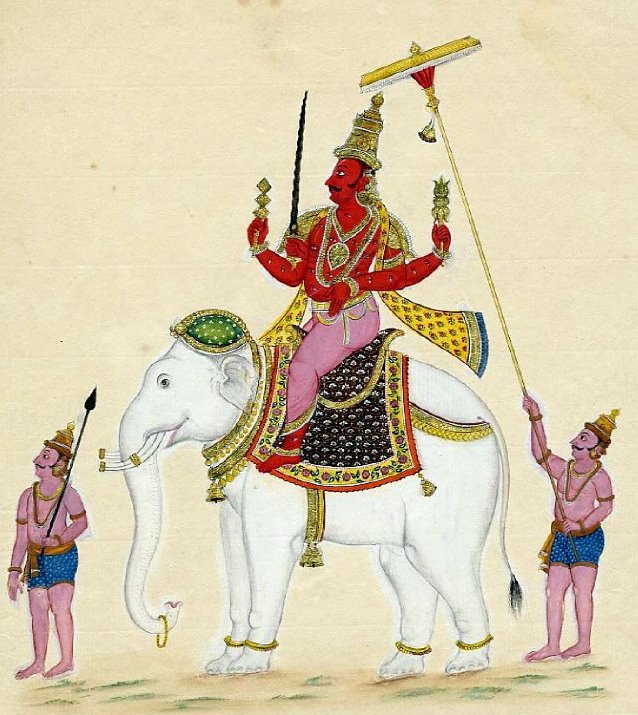
Fig : Indira
- Surya was a god who removed darkness. Ushas was the goddess of dawn. Aditi, Prithvi and Sinivali are other goddesses. Varuna, the god of water was next in importance.
- This god was the upholder of natural order. Soma was the god of plants and the drink was named after him.
- Soma drink was part of the ritual and the preparation of this intoxicating drink is explained in many hymns. Maruts was the god of strength. Interestingly there are few references to Rudra or Siva.
- Rituals were adopted as a solution to many issues and the problems of dayto- day life and thus the priests had an important role in the society.
Characteristics of Society
- In the early Vedic period lineage and tribes constituted society, and the king had limited power. The various tribal groups of Aryans and non-Aryans fought to control the territories.
- Social divisions did not take deep root, although the concept of varna and Aryan identities existed. Pastoralism was predominant and cattle centred clashes were common, although agriculture did play an important role.
- The archaeological sites suggest different types of craft production including metal, carpentry, pottery and clothes.
